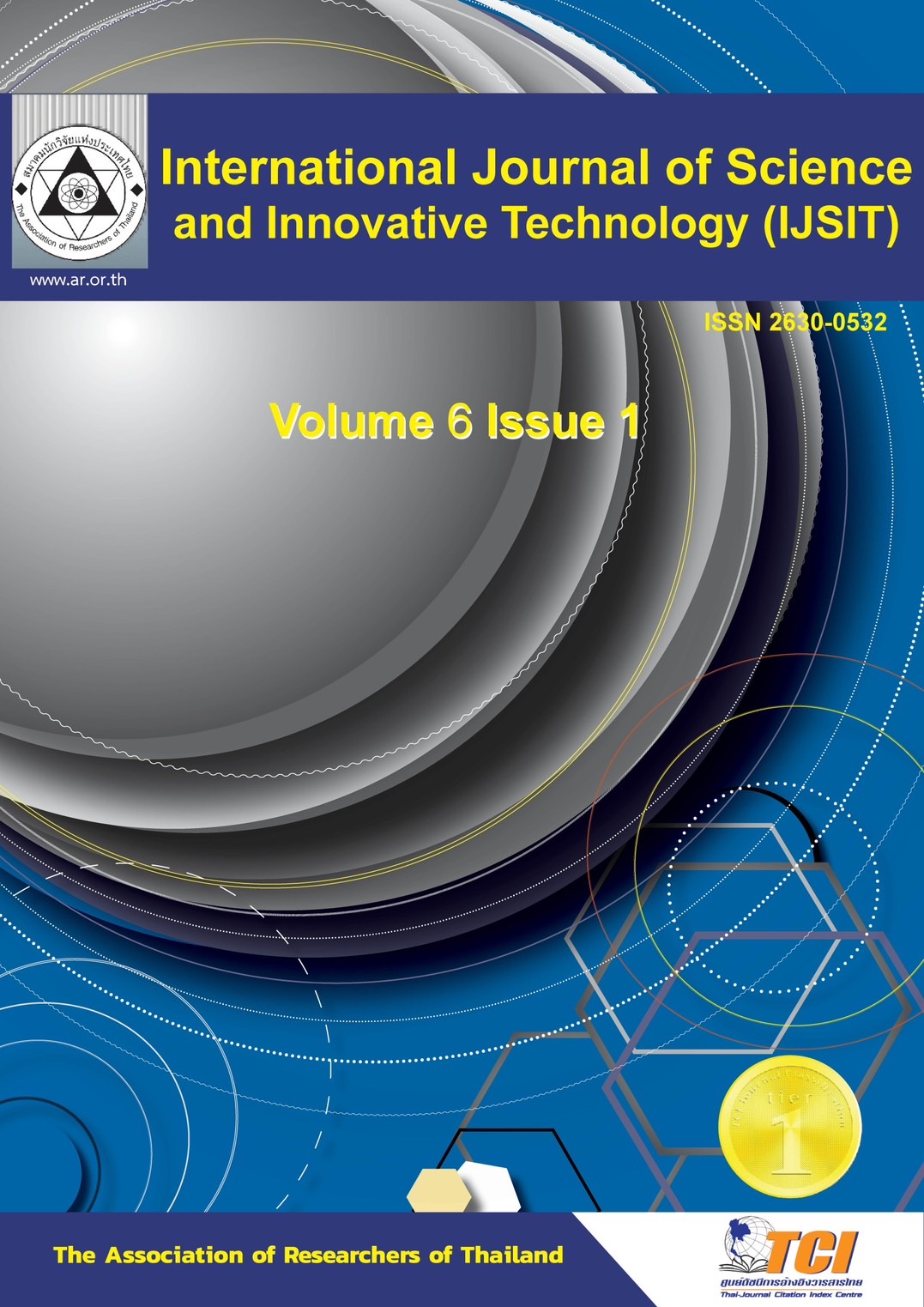Design Energy Saving House by Natural Ventilation in Thailand.
Main Article Content
Abstract
This paper reports the experimental investigation and designing of Energy saving House by natural ventilation. The Gypsum Wall (GW) with to Metal Sheet Roof (MSR). Tinted Glass with Gypsum Wall (TGGW) with to Metal Sheet Roof with Perforated Ceiling (MSRPC). And the Solar Chimney Wall with Daylighting (SC-WD) with to Solar Chimney Metal Sheet Roof with Perforated Ceiling (SC-MSRPC) developed by Faculty Department of Mechanical Engineering, Faculty Industrial Education Rajamangala University of Technology Suvarnabhumi. The experimental study of three test houses. The dimension of the testing boxes is 120 X 120 cm with 120 cm height and the length of roof along slope is 160 cm. The wall houses were made of white painting gypsum board. The GW & MSR is single layer normal metal sheet. The TGGW & MSRPC uses Perforated Ceiling and open void for ventilation. The SC-WD & SC-MSRPC same TGGW & MSRPC but developed panels along the roof degrees. The slope of the angle roof is 30°.The experimental results were showed the room temperature of GW & MSR is always higher than the TGGW & MSRPC and SC-WD & SC-MSRPC, respectively. Observe that, during 12:00 - 18:00 the temperature difference between the attics space with room temperatures from ambient temperature of GW & MSR higher than TGGW & MSRPC and SC-WD & SC-MSRPC respectively due to the effect of attic space cannot ventilated. The average indoor illuminance of SC-WD & SC-MSRPC was higher than the standard illuminance by about 310 -910 lux. The air flow rate and number of air change by about 0.0025- 0.004 m3/s (9-14 m3/hr) and 2-8.5 ACH, respectively. The SC-WD & SC-MSRPC should be promoted for architectural and engineering designs.
Article Details

This work is licensed under a Creative Commons Attribution-NonCommercial-NoDerivatives 4.0 International License.
References
Ananacha T., Puangsombut W., 2012 Hirunlabh., Shading Effects on the winter of the ThaiModern Façade Wall. Proceedings of 3th International Conference on SustainableEnergy and Green Architect (SEGA), Bangkok, Thailand
Ananacha T., Puangsombut W., Hirunlabh J., Khedari J. 2013 Field Investigation of the ThermalPerformance of a Thai Modern Façade Wall. The International Journal of Ventilation 12,.223-34.
Ananacha T.,2014 Daylighting and Thermal Performance of Double Glass Wall. InternationalConference on Advances in Science & Technology (ICAST), Chonburi,Thailand
Ananacha T., Puangsombut W.,2010 Heat gain reduction through double window by natural ventilation with
curtain. Proceedings of 24th Conference of the Mechanical Engineering Network of Thailand
Chantawong P., Hirunlabh J., Zeghmati B., Khedari J, Teekasap S., Win M. M. 2006 Investigationon thermal performance of solar chimney wall. Solar Energy,80,288-297 (ME-NETT), Ubon Ratchathani, Thailand
Khedari J,Pongsathirat C., Puangsombut W., Hirunlabh J.,2005 Experimental performance of apartially-glazed
Modified Trombe Wall. The International Journal of AmbientEnergy, 26,27-36.
Puangsombut W.,2009 Experimental performance of solar chimney window on school building. Research and
Development Journal of The Engineering Institute of Thailandunder H .M. The King’s Patronage, 20, 2009,70-5.
Sakdapipanich S., Puangsombut W.,2011 Heat gain reduction by hempen curtain with naturalventilation.
Proceedings of 7th Conference on Energy Network of Thailand (E-NETT),Phuket, Thailand
Sahabuddin Latif ,(2019) Baharuddin Hamzah, Ramli Rahim, Rosady Mulyadi, and Andi Erwin Eka Putra Study of the heat ventilation with inclined chimey in the attic. International Journal of GEOMATE, 17(64), 178-184.
Watchrodom N., Puangsombut W.,(2010) Mathematical model of a solar chimney wall. Proceedings of 24th
Conference of the Mechanical Engineering Network of Thailand (ME-NETT), Ubon Ratchathani, Thailand


